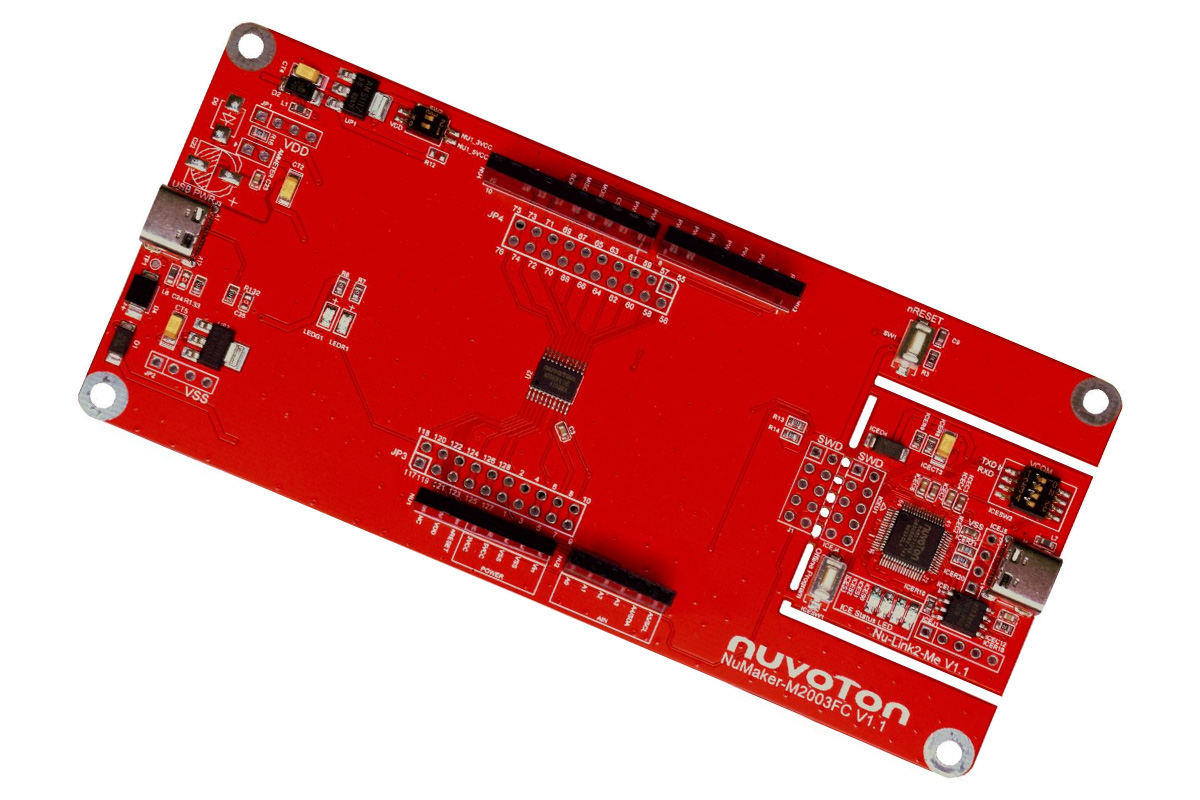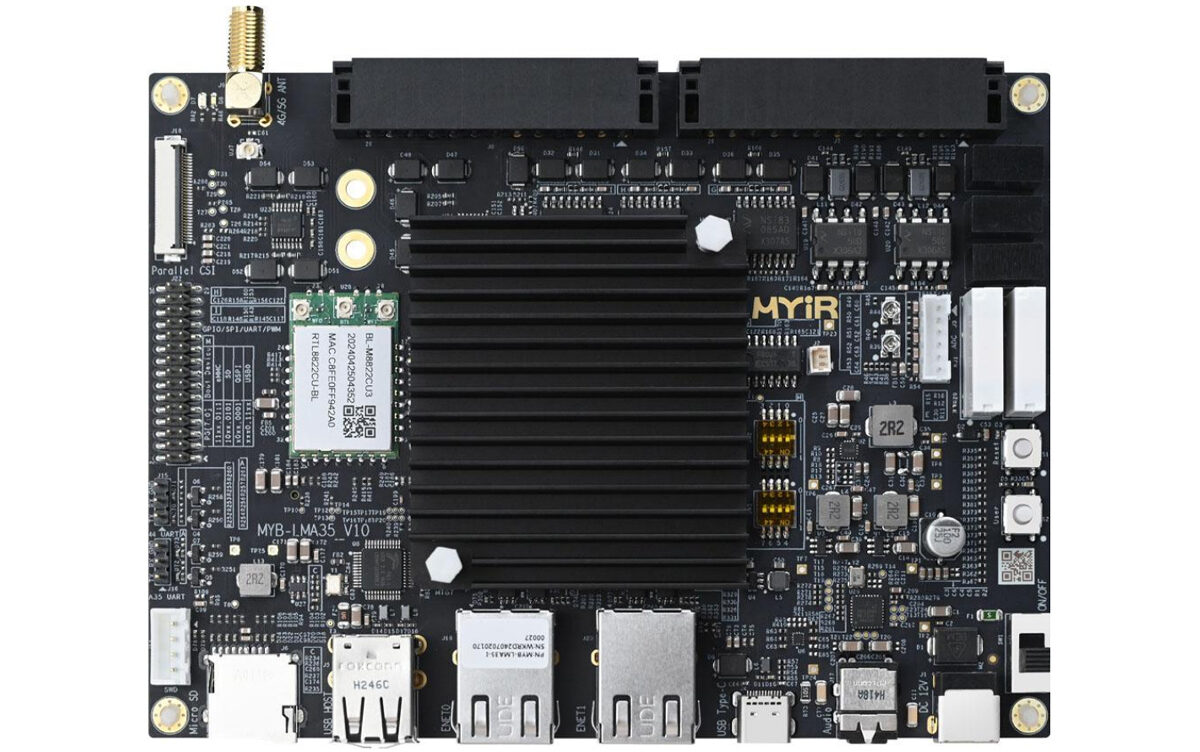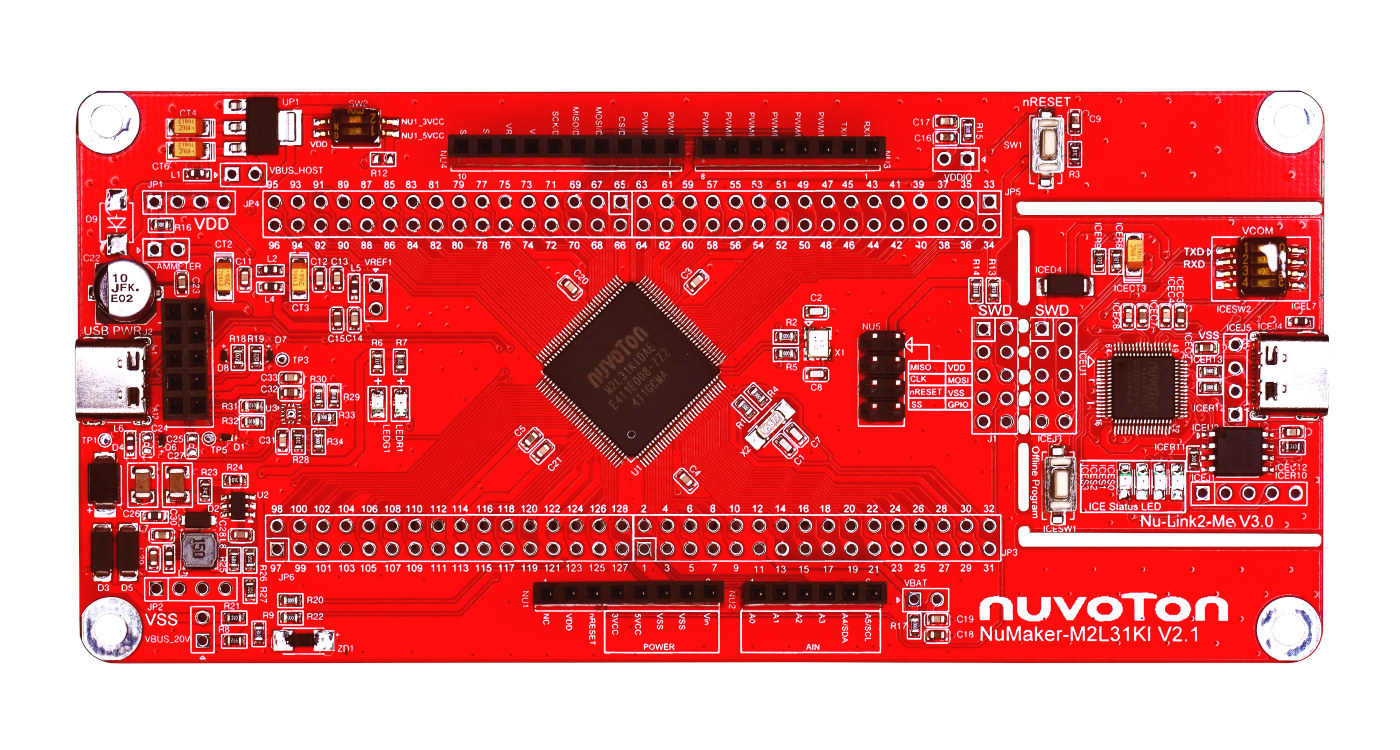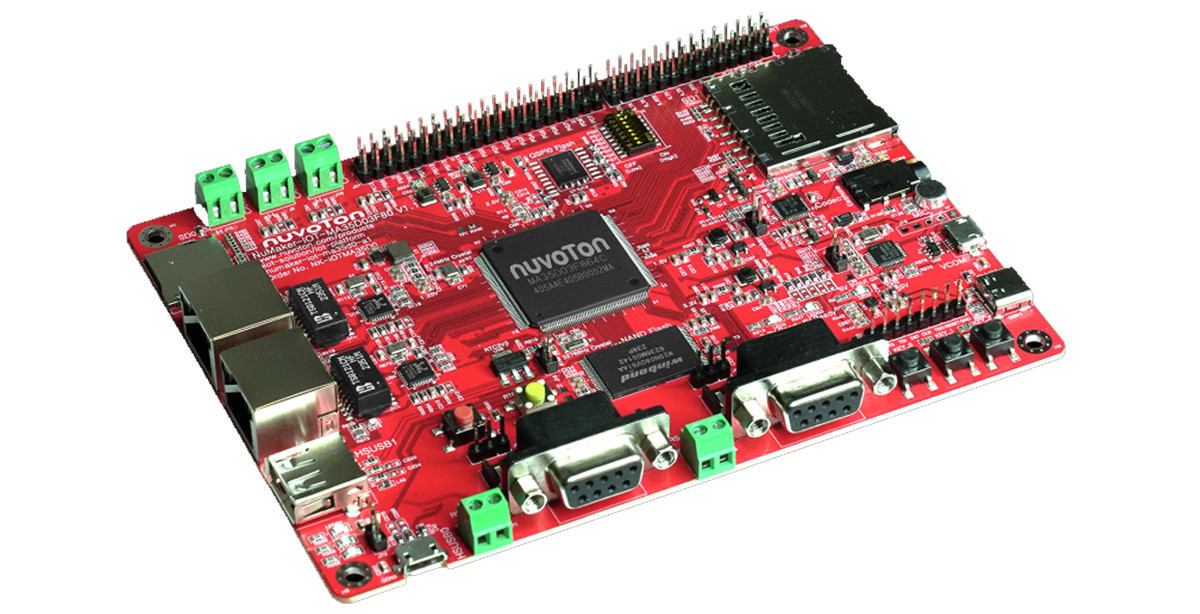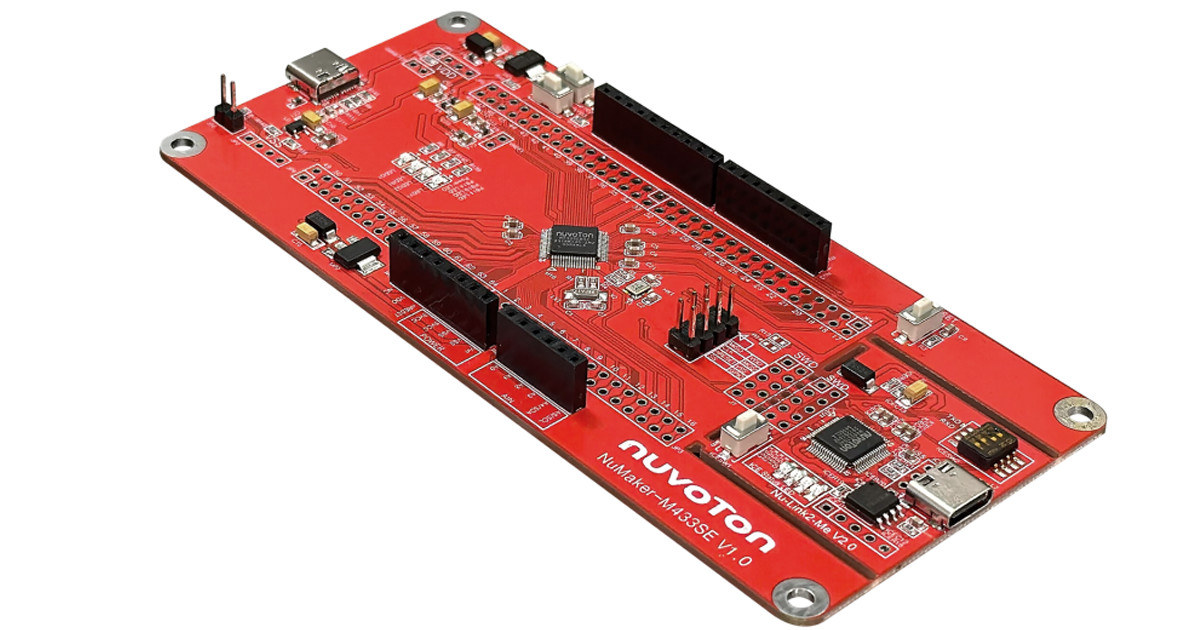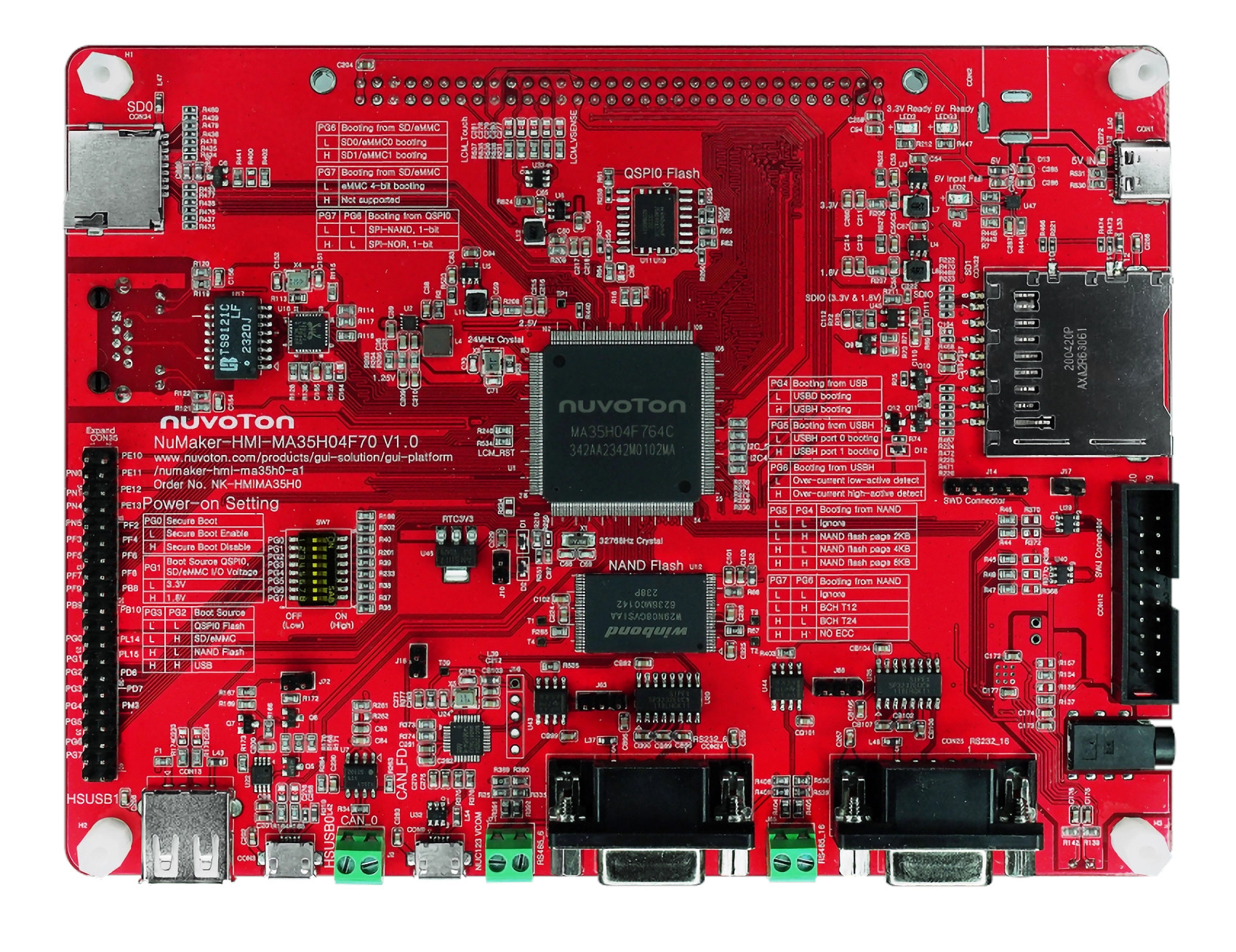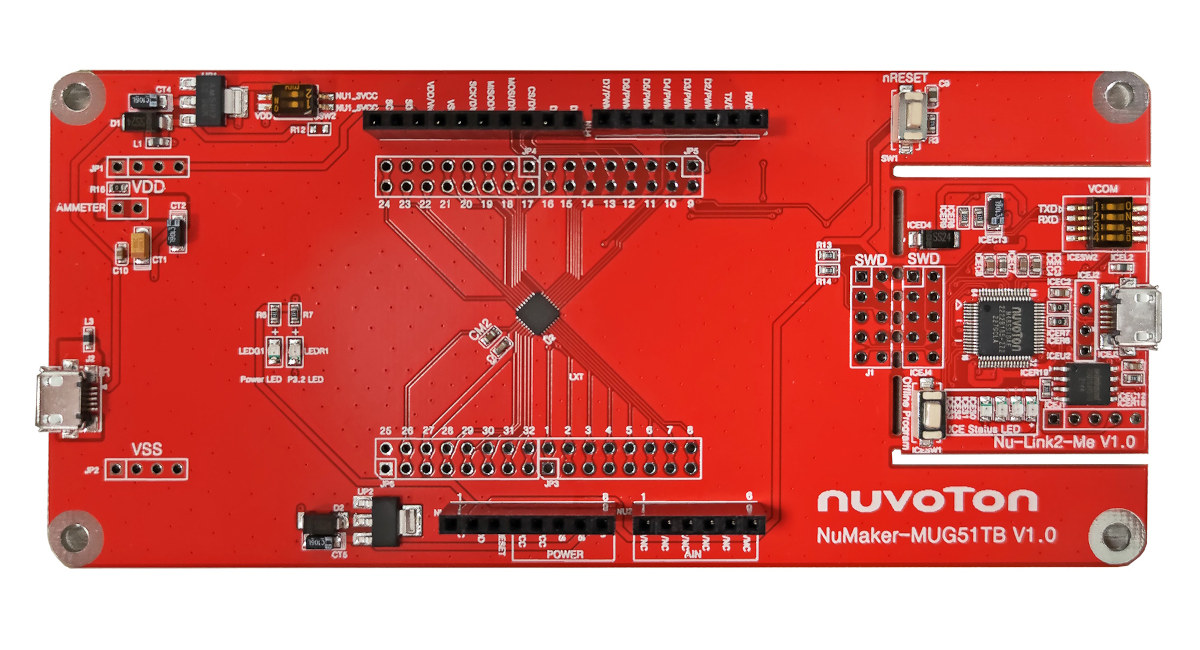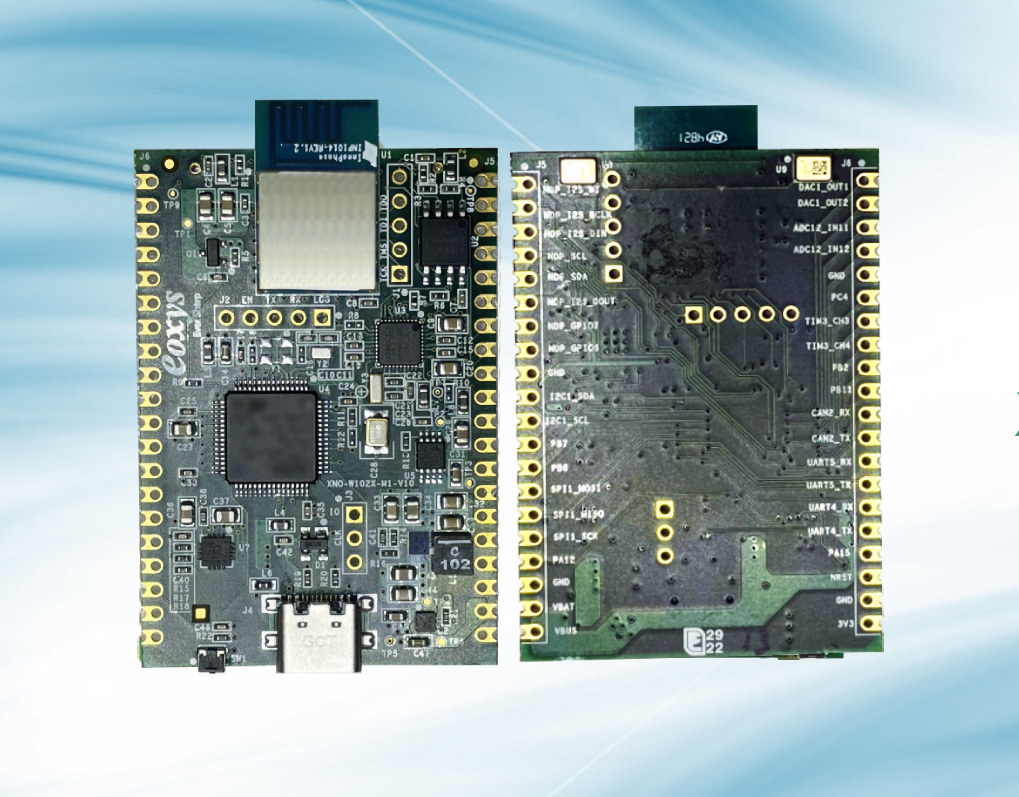Nuvoton has recently launched the Nuvoton M2003 series of low-cost Arm Cortex-M23 microcontrollers which at the time of writing features M2003FC1AE and M2003XC1AE microcontrollers. Major features include a 32-bit hardware multiplier/divider, 32 KB of flash memory, 4 KB of SRAM, multiple communication interfaces (UARTs, I²C, USCI), analog peripherals (8-channel 12-bit ADC, 6-channel 16-bit PWM), and support for a wide voltage and temperature range. These features make this device useful for AIoT, industrial automation, smart homes, energy storage, and automotive electronics, and the company says the low-cost M2003 family offers a migration path from 8-bit to 32-bit designs. Feature-wise both the MCUs are the same and the only difference is in their package. The M2003FC1AE comes in a TSSOP20 package, whereas the M2003XC1AE comes in a QFN20 (3x3mm) package. The NuMaker-M2003FC development board is also offered for evaluation. Nuvoton M2003 series MCU specifications Device – Nuvoton M2003 series of MCUs M2003FC1AE […]
Nuvoton NuMicro MA35D1-powered industrial SoM and dev board features dual GbE ports, cellular connectivity, and more
MYIR has recently introduced MYC-LMA35 industrial SoM and its associated development board built around the Nuvoton NuMicro MA35D1 microprocessor with two Arm Cortex-A35 cores and one Arm Cortex-M4 real-time core for processing. The SoM comes in a BGA package with connectivity options such as dual Gigabit Ethernet, cellular connectivity, Wi-Fi/Bluetooth, and various other interfaces like RS232, RS485, USB, CAN, ADC, GPIO, and more. All these features make this SoM and its associated dev board useful for demanding edge IIoT applications like industrial automation, energy management systems, smart city infrastructure, and remote monitoring solutions. Previously we have seen MYIR introduce various SoM and development boards like the MYC-LR3568 Edge AI SoM, and the MYC-YF13X SoM and we have also written about similar industrial dev boards such as the Firefly ROC-RK3576-PC, the Nuvoton NuMicro M2L31 development board, and many more. Feel free to check those out if you are interested in the topic. […]
Nuvoton NuMicro M2L31 Arm Cortex-M23 MCU embeds up to 512KB high-durability ReRAM, 168KB SRAM
Nuvoton NuMicro M2L31 is a family of Arm Cortex-M23 microcontrollers clocked up to 72 MHz, equipped with 64KB to 512KB high-durability ReRAM (Resistive Random-Access Memory) with fast write speeds, 40KB to 168KB SRAM. The microcontroller supports 1.71V to 3.6V operating voltage, can operate in the -40°C to 105°C temperature range, and offers a wide range of interfaces available through packages as small as WLCSP 25 (2.5 x 2.5 mm) and up to LQFP128 (14 x 14 mm). Arm introduced the Cortex-M23 core in 2016 together with the Arm Cortex-M33 core, but while the latter is widely integrated in a large range of designs, we’ve seen fewer Cortex-M23 microcontrollers with some examples being Microchip SAML10/L11 (2018) and more recently, the Renesas RA0 family. Nuvoton adds another option with the Numicro M2L31 that also happens to integrates ReRAM non-volatile memory. Key Features: MCU core – Arm Cortex-M23 core running up to 72 […]
Nuvoton NuMicro MA35D0 is a low-cost dual-Core Arm Cortex-A35 microprocessor for industrial edge applications
The Nuvoton NuMicro MA35D0 series is a cost-effective, dual-core Arm Cortex-A35 MPU designed specifically for edge IoT applications. The specifications of this MPU are very similar to the Nuvoton MA35H0, and it looks more like a low-power low-cost version of the NuMicro MA35D1. The MPU features integrated, stacked DDR SDRAM options (128MB or 256MB) to reduce PCB complexity and BOM costs. It also offers some security options with Arm TrustZone, secure boot, cryptographic accelerators, and a True Random Number Generator, making it ideal for industrial applications. The MPU also offers various peripherals and connectivity options including 2x Fast Ethernet (IEEE 1588 v2) interfaces, high-speed USB, SD3.0/eMMC, three CAN FD, eleven UART, and more. Additionally, the MA35D0 MPU supports touchscreens and a TFT LCD controller with resolutions up to 1280×800. Nuvoton NuMicro MA35D0 Series specifications: CPU Sub-system 2x Arm Cortex-A35 cores running at up to 650 MHz L1 Cache – 32 Kbytes instruction […]
Nuvoton launches M433 Series ultra-low power Arm Cortex-M4F MCUs, NuMaker-M433SE development board
Nuvoton has recently announced their M433 Series MCUs (M433LE8AE and M433SE8AE) along with the NuMaker-M433SE development board. Nuvoton is calling this the “M433 CAN/USB FS OTG” Series, featuring an Arm Cortex-M4F core with DSP and FPU extensions. The MCU is clocked at 144 MHz and consumes 350 nA in deep power-down mode, making it ideal for battery-operated IoT, industrial, and consumer applications. This is not the first Nuvoton MCU we have written about. In recent months, we have seen Nuvoton release the NuMicro M091 Series, the Nuvoton MA35H0 – a cost-optimized MPU, and other dev boards and MCUs. Feel free to check those out if you are interested in the topic. Nuvoton M433 Series MCUs specifications: MCU core 144 MHz Arm Cortex-M4F Includes DSP and FPU instructions Memory Protection Unit (MPU) with 8 regions Memory Up to 128 KB Flash 4 KB LDROM Up to 64 KB SRAM with parity […]
Nuvoton MA35H0 is a cost-optimized dual Cortex-A35 MPU for industrial HMI applications
Nuvoton MA35H0 is a 650 MHz dual-core Cortex-A35 MPU designed for industrial HMI applications with up to 1280×800 resolution that offers a cost-down alternative to the 800 MHz Nuvoton MA35D1 microprocessor handling up to 1920×1080 resolutions. The MA35H0 integrates 128MB DDR memory, supports 2D graphics acceleration, JPEG and H.264 video decoding up to 1280×800 at 60 FPS, and is equipped with a range of interfaces such as Fast Ethernet, CAN FD, UART, and up to 154 GPIOs. It is designed to operate in an extended temperature range between -40 and 125°C. Nuvoton NuMicro MA35H0 specifications: CPU sub-system – 2x Cortex-A35 cores running at up to 650 MHz Memory sub-system On-chip 384 KB SRAM 128MB Multi-Chip Package (MCP) DDR Storage Quad SPI NAND flash controller Secure Digital Host Controller (SDHC) Display and Video Sub-system 18-bit 24-bit RGB TFT-LCD display interface up to 1280×800 @ 60 Hz 2D Graphic Engine (GFX) H.264 […]
Nuvoton MUG51 8-bit 8051 microcontroller is made for battery-free devices
8-bit microcontrollers are here to stay despite the rise of 32-bit microcontrollers. Renesas introduced the RL78/G15 entry-level 8-bit microcontroller in a tiny 3x3mm package at the beginning of the year, and now Nuvoton has just unveiled the MUG51 8-bit 8051 microcontroller with a long-term production commitment. The MUG51 is specially designed for battery-free devices such as passive stylus pens and RFID cards. The 8-bit microcontroller embeds 1 KB SRAM, 16KB flash plus 4KB flash for user program loader, various peripherals with up to 24x GPIOs with interrupt, I2C, SPI, UART, DMA, and so on, as well as various timers. Nuvoton MUG51 specifications: Core – 1T 8051-based core running up to 7.3728 MHz Memory/Storage 1 KB SRAM 16 KB Flash Up to 4 KB Flash for user program loader (LDROM) 128 bytes SPROM (Security Protection ROM) ISP/ICP/IAP programming Peripherals Up to 24x I/O with interrupt capability 2x UART (Tx/RX), 2x I2C, […]
Eoxys Xeno+ Nano ML board combines NuMicro M2354 or STM32L4 MCU with Talaria TWO ultra low power WiFi & BLE 5.0 module
Eoxys Xeno+ Nano ML is a wireless machine learning (ML) board with either Nuvoton NuMicro M2354 or STMicro STM32L4 microcontroller, InnoPhase IoT’s Talaria TWO ultra-low power Wi-Fi and BLE 5.0 module, and the Syntiant Core 2 NDP120 neural decision processor we first noticed in the Arduino Nicla Voice module a few weeks ago. The boards/modules are designed for intelligent and secure IoT devices for smart home, industrial, and medical automation applications, and the company claims it can be used in Wi-Fi IoT sensors with up to 10+ years thanks to the low-power chips and circuitry used in the design. Eoxys Xeno+ Nano ML specifications: General purpose MCU (one or the other) STMicro STM32L4 Arm Cortex-M4 microcontroller at 80MHz with 1MB flash, 128KB/352KB SRAM Nuvoton NuMicro M2354 Arm Cortex-M23 microcontroller at 96MHz with 1MB flash, 128KB SRAM. Wireless module Innophase Talaria TWO ultra-low-power 2.4GHz 802.11b/n/g WiFi 4 and Bluetooth LE 5.0 […]


